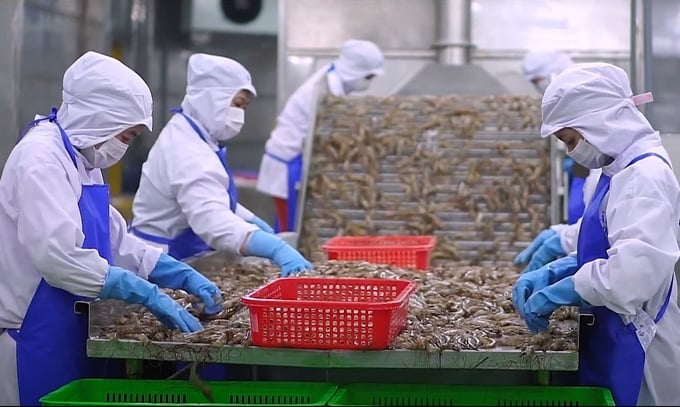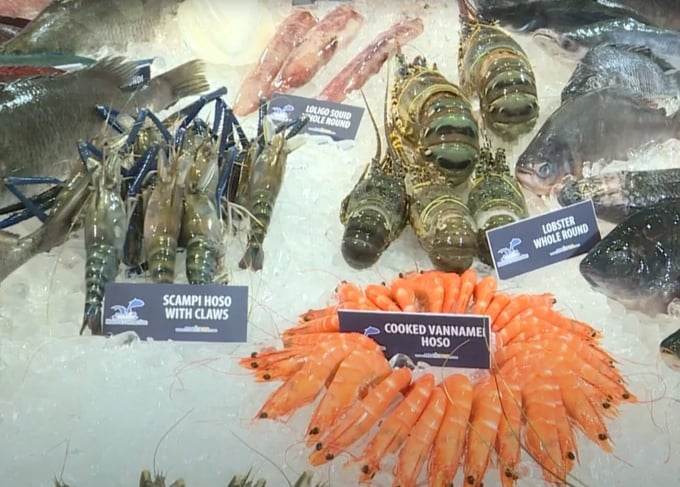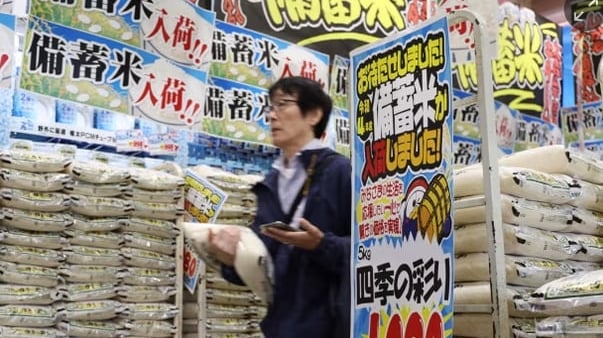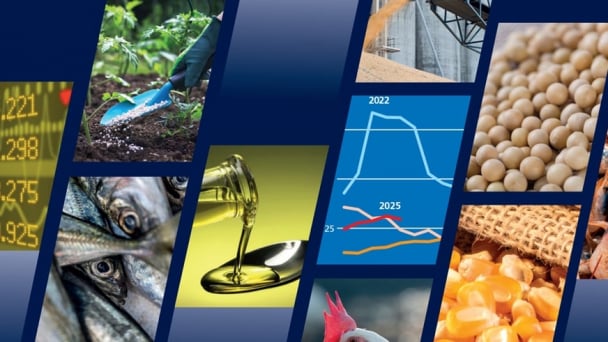June 18, 2025 | 21:00 GMT +7
June 18, 2025 | 21:00 GMT +7
Hotline: 0913.378.918
June 18, 2025 | 21:00 GMT +7
Hotline: 0913.378.918

Processing raw shrimp in a factory in the Mekong Delta. Photo: Son Trang.
According to Ms. Kim Thu, shrimp market expert of the Vietnam Association of Seafood Exporters and Producers (VASEP), China is one of the two most prominent markets for Vietnamese shrimp in the first quarter of this year. By the end of the first quarter, shrimp exports to China-Hong Kong reached USD 128 million, an increase of 70% over the same period in 2023. With the above turnover, China-Hong Kong was the largest market for Vietnamese shrimp in the first quarter of the year.
The important reason why Vietnam's shrimp exports to China increased sharply in the first 3 months of the year is that China increased inspection at ports for imported Ecuadorian shrimp. The inspection focuses on labeling regulations and sulfite residue.
VASEP said that China began increasing inspections for Ecuadorian shrimp after Wang Hai, a famous blogger and considered this country's anti-counterfeiting expert, published information about Ecuadorian shrimp sold on Chinese commercial platforms that contains preservatives in excess of allowable levels.
Specifically, Wang Hai bought shrimp originating from Ecuador on East Buy, one of China's largest online sellers, and then took it for testing. The result is that a residue of sulfur dioxide (a preservative widely used in shrimp processing) was detected at a level of 0.155 gr/kg. This level exceeds the allowable threshold according to Chinese regulations (0.1 gr/kg).

Some of Vietnam's shrimp products at Vietfish 2023. Photo: Son Trang.
On February 19, China began detecting a shipment of shrimp imported from Ecuador with a sulfite content exceeding the allowable level. After that, a series of other shrimp shipments were also discovered with similar errors.
According to the General Administration of Customs of China (GACC), in the first 2 months of this year, 43 shipments of Ecuadorian shrimp were refused import into China. Of these, 34 shipments were caused by sulfite content (a preservative often used in the food industry to prevent oxidation) exceeding the allowed level. The remaining rejected shipments were due to inconsistent records, excessively volatile basic nitrogen, or the presence of animal pathogens.
Ecuador is the largest shrimp exporter to China. In 2023, China imported a record amount of shrimp of 1.1 million tons, of which Ecuadorian shrimp accounted for about 70% with 697,000 tons.
Therefore, when China tightens inspection of shrimp imported from Ecuador, Chinese traders have to increase shrimp imports from other markets, including Vietnam. Data from the General Administration of Customs of China shows that, in February 2024, while shrimp imports from Ecuador decreased by 24% in volume and 35% in value compared to February 2023, shrimp imports from Vietnam increased by 22% in volume and 3% in value.
Red Sea tensions, leading to increased ocean freight, also caused China to reduce shrimp imports from Ecuador in particular and the Americas in general and switch to importing goods from nearby markets such as Vietnam.
Currently, Vietnam is exporting commodities like whiteleg shrimp, giant tiger prawn, lobster, etc. to China. Of which, China is the largest market for Vietnamese lobster. In the first 2 months of this year, lobster exports to China reached nearly USD 29 million, 27 times higher than the same period last year.
In addition, Vietnam's processed shrimp products, such as shrimp dumplings, ginger shrimp sparkling pullers, frozen whiteleg shrimp meat with fried dough, frozen whiteleg shrimp skewers, etc., are also increasingly popular with Chinese consumers.

Value-added shrimp processing. Photo: Son Trang.
Dr. Ho Quoc Luc, Chairman of the Board of Directors of Fimex VN, said that China has thousands of large-scale enterprises specializing in processing shrimp to supply domestic consumption systems and exports. Because the world's supply of raw shrimp is quite abundant, Chinese enterprises mainly import raw shrimp to process and supply finished shrimp to the market. Meanwhile, the vast majority of Vietnamese shrimp for export today are finished shrimp or value-added shrimp products. Therefore, Vietnamese shrimp businesses are focusing on selling to the Chinese market shrimp products that other countries do not have.
According to VASEP, China and the US are the two largest shrimp import markets in the world today. The US accounts for about 26–30% of the global shrimp import value, while China accounts for 16–22%.
Translated by Thu Huyen
/2025/06/17/2344-1-131758_261.jpg)
(VAN) Amid tariff risks and growing trade barriers in the U.S. market, Australia is emerging as a promising destination to sustain the growth momentum of Vietnam's shrimp exports.
/2025/06/17/2013-1-nongnghiep-112009.jpg)
(VAN) This notable growth trend reflects the global taste for fresh, nutritious fruits and the expanding use of lychees across various sectors.

(VAN) The political and cultural insulation of Japan’s beloved grain is falling apart, and experts warn the country’s relationship with the staple will have to adapt.

(VAN) Noting risks, report examines impacts of avian influenza, changing trade patterns since 2022, fish fraud, and shipping industry’s net-zero goals.

(VAN) Mr. Tran Quang Bao, General Director of the Forestry and Forest Protection Department, met and worked with the International Wood Products Association to promote cooperation in the field of timber trade.

(VAN) China's outbound shipments of rare earths in May jumped 23% on the month to their highest in a year, though Beijing's export curbs on some of the critical minerals halted some overseas sales.

(VAN) To sustain capital flow, administrative reform alone is not enough; what farmers truly need is an ecosystem where both government and businesses grow together in support.